Continuing our look at September’s sales distribution charts for comics in the Direct Market, it’s time to look at Image and the independent publishers. First up, Image:
Image is mostly the same if gently sliding a bit.
Walking Dead gets ~62.5K, Oblivion Song is ordered into the DM at ~34.5K, Bully Wars debuts at ~27.1K, Cemetery Beach debuts at ~22.1K, Spawn is coming back down toward Earth with ~20.6K. It’s worth noting that Man-Eaters #1 has two editions – one charted with ~10.4K and the other with ~8.2K… so that would add up to a fairly healthy ~18.6K between the two editions. Yes, 40 comics selling under 10K is quite a bit. I counted 23 of those non-reorder issues as being under 4K. When retailers grouse about Image having a lot of low sellers, this is what they’re talking about.
Then there’s the rest of the indies and the chart is going to look a bit different this month.
What’s the 60K sales band doing in the independent comics chart? Stranger Things #1 from Dark Horse was ordered into the DM at ~60.1K copies. But wait! It gets better. According to ICV2, the print run was actually 136K. It seems Dark Horse was distributing the retailer variants on their own… and one of those was for GameStop. So that was a very big comic. It will be interesting to see what the orders for #2 look like. If that was selling through, there could be a new cash cow in the pasture. Interestingly, Stranger Things didn’t crack the Comixology top 20 the week of release. Walking Dead more or less owns the Comixology chart whenever there’s a new issue, so there’s that, too.
Past that, not the heaviest month for the indies. Mighty Morphin Power Rangers was the only comic to break the 20K barrier with ~20.9K copies ordered. Notable sellers include Rick & Morty Vs. Dungeons & Dragons a mere two copies below 20K, Vampirella Deja Thoris debuts with ~17K, Archie Meets Batman ’66 with ~16.4K copies, Mystery Science Theater debuts with ~14.6K, Rick & Morty (the regular series) with 13.3K, and John Wick with ~13.1K copies ordered. The highest ordered creator owned book outside of Image was League of Extraordinary Gentlemen Tempest at just under 12K.
What happens if we combine the charts?
It’s a little weird seeing Stranger Things out there next to Walking Dead… and it seems Stranger Things was a much bigger seller when the retailer variants are factored in, so it will be really interesting to see how those stack up next month. So while Dark Horse can run with Image at the top of the list, Image still has more volume in all the sales bands, but most importantly all the bands above 10K.
Standard disclaimers: The numbers are based on the Diamond sales charts as estimated by the very reliable John Jackson Miller. These charts are pretty accurate for U.S. Direct Market sales with the following caveats: 1) you can add ~10% for UK sales, which are not reflected in these charts; 2) everyone’s best guess is you can add ~10% for digital sale – while some titles do sell significantly better in digital (cough Ms. Marvel cough), that’s the average rule of thumb; 3) it’s not going to include reorders from subsequent months, although reorders will show up in subsequent months if they’re high enough. So if you’re a monster seller in Southampton and it took the US audience 3 weeks to reorder, it’s probably not going to be reflected here.
What’s a sales band? It’s another way to have a higher level view of the market. The general idea is to divide the market into bands of 10K copies sold and see how many issues are in each band. How many issues sold between 90-99K copies, 80-89K copies, etc. etc. In very broad terms, the market is healthier when there are several titles selling in the 70K-100K+ range because titles that move a lot of copies give the retailers some margin of error on their ordering. When you see titles selling in the 20-29K band and especially below, there’s a pretty good chance a lot of retailers aren’t ordering those titles for the shelf (pull box/pre-order only) or minimal shelf copies at best.
For the purposes of these sales band charts, we really are looking for titles that are selling 10K and over, so only publishers with an issue that topped 10K will be listed here. The sad fact is, most independent comics sell under 10K and it’s when they cross that line that they really start getting noticed. The September estimates have the top 500 single issues, which means everything above 549 copies ordered, so this is probably a fairly complete list compared to the old top 300.
Want to learn more about how comics publishing and digital comics work? Try Todd’s book, Economics of Digital Comics




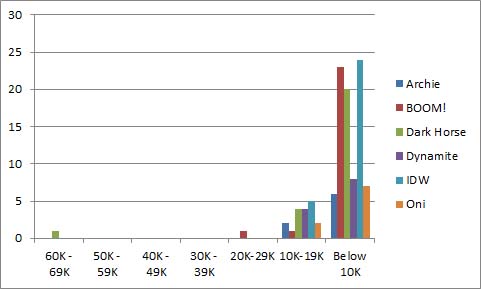
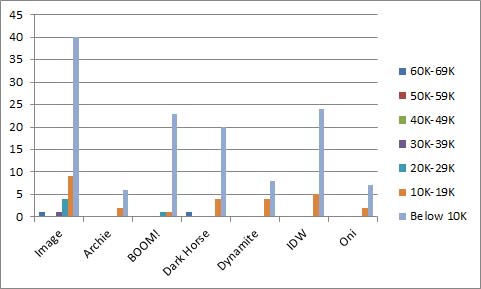
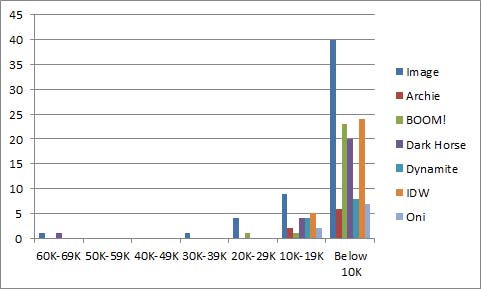

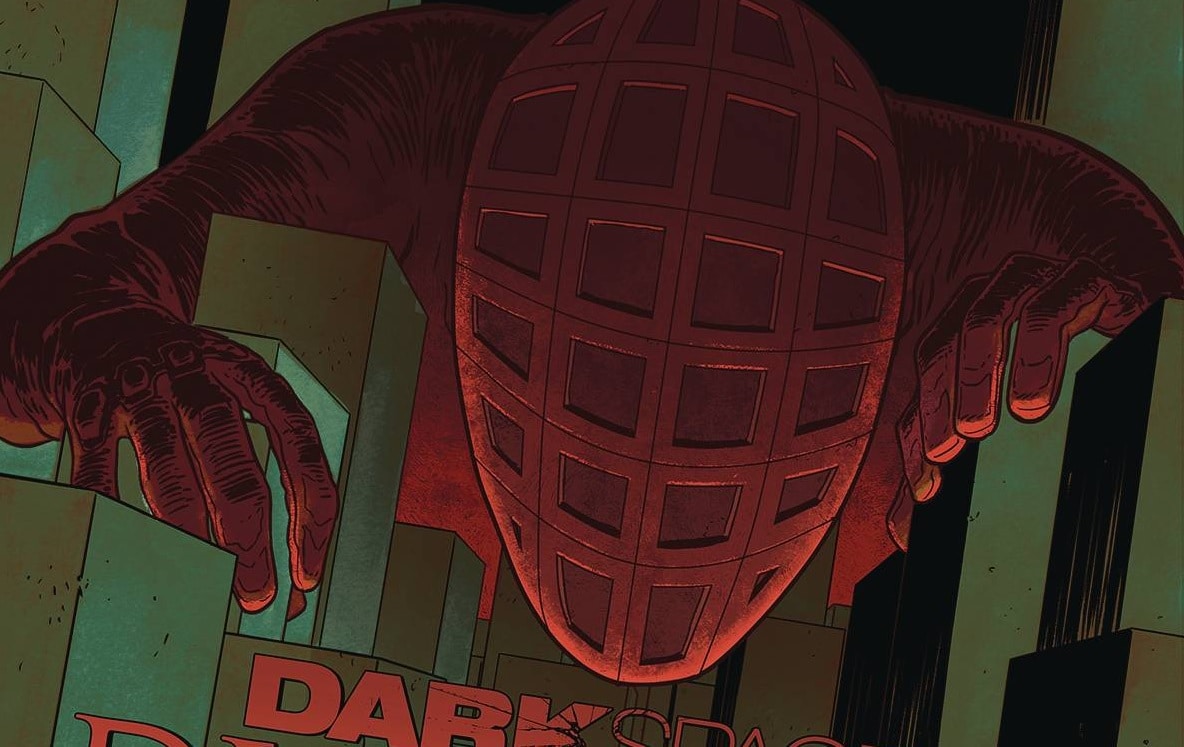
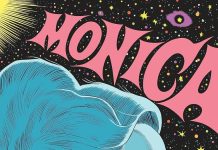


It’s unfortunate that Stranger Things wasn’t very good. I’m still picking up the 2nd issue but I wouldn’t be surprised to the sales drop pretty fast.
Comments are closed.